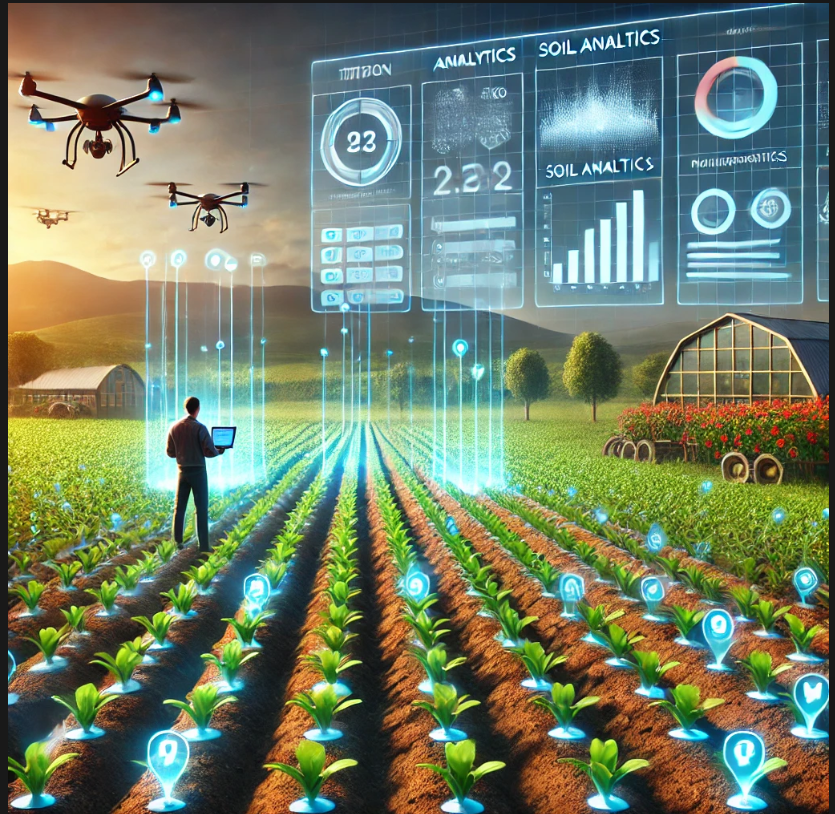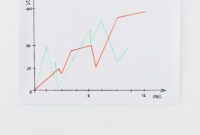In today’s agricultural landscape, increasing productivity while maintaining sustainable farming practices has become crucial. A key strategy that farmers are adopting is maximizing crop yields using soil analytics and BI (Business Intelligence). This combination of technology allows for better understanding and management of soil conditions, leading to improved crop performance. By leveraging soil analytics and business intelligence, farmers can make data-driven decisions, optimize resources, and boost productivity.
The Role of Soil Analytics in Maximizing Crop Yields
Soil analytics involves the study and evaluation of soil properties to determine its suitability for different crops. The process includes measuring soil pH levels, nutrient availability, moisture content, and other critical factors that influence plant growth. These data points are crucial for farmers to adjust their farming practices and ensure they’re providing optimal growing conditions for crops.
Using soil analytics, farmers can better understand:
- Soil Nutrient Content: Knowing which nutrients are deficient allows for targeted fertilization, reducing waste and promoting healthier crop growth.
- Moisture Levels: Irrigation can be optimized by monitoring soil moisture, ensuring that crops receive the right amount of water without overuse.
- Soil pH Levels: The acidity or alkalinity of the soil affects nutrient absorption. By monitoring pH, farmers can amend the soil to ensure better crop yields.
Soil analytics provides real-time insights that lead to smarter, data-driven decisions, giving farmers an edge in managing soil fertility and crop health.
The Impact of Business Intelligence (BI) in Agriculture
Business Intelligence (BI) in agriculture refers to the use of data analytics, reporting tools, and predictive models to gain actionable insights. BI helps in understanding trends, analyzing historical data, and forecasting future events. When applied to farming, it enables better decision-making, resource management, and operational efficiency.
When combined with soil analytics, BI can maximize crop yields by:
- Predictive Analysis: Farmers can forecast potential challenges such as droughts, pest infestations, or nutrient deficiencies, and take proactive measures.
- Data-Driven Resource Allocation: With BI, farmers can monitor and analyze data related to soil conditions, crop performance, weather patterns, and market demands. This helps allocate resources such as water, fertilizers, and labor more efficiently.
- Improved Crop Rotation Strategies: By analyzing historical data, BI can recommend optimal crop rotation schedules that ensure the soil remains fertile and free from nutrient depletion.
- Cost Optimization: BI helps in reducing operational costs by providing insights into where resources can be saved, whether it’s in energy usage, water consumption, or labor.
How to Integrate Soil Analytics and BI for Maximum Crop Yields
Maximizing crop yields using soil analytics and BI requires a structured approach. Here’s how farmers can integrate both tools effectively:
1. Collect Comprehensive Soil Data
The first step in using soil analytics is to collect detailed data about the soil. This can be done using sensors, satellite imagery, and field samples. The data should cover aspects like nutrient content, moisture levels, and pH. Soil sensors can be installed in different zones of the farm to gather real-time data, while satellite imaging provides an aerial view of the field’s overall health.
2. Leverage Data Visualization and Reporting
With the help of BI tools, farmers can transform raw soil data into visually understandable reports. These reports help identify trends, monitor changes over time, and provide insights into crop performance. Dashboards offer a real-time view of soil health, allowing farmers to make timely decisions.
3. Implement Predictive Analytics for Future Planning
By using historical soil and weather data, BI tools can forecast future challenges and opportunities. For instance, if the system predicts a drought, farmers can plan irrigation strategies in advance. If soil analytics show a potential nutrient deficiency, farmers can adjust fertilization schedules accordingly.
4. Optimize Resource Allocation
One of the most significant advantages of combining soil analytics with BI is the ability to optimize resource usage. With precise soil data, farmers can avoid over-fertilization, reduce water waste, and allocate labor more effectively. BI systems can provide suggestions on the best time to plant, irrigate, and harvest crops based on soil conditions and market demand.
Benefits of Using Soil Analytics and BI in Agriculture
The integration of soil analytics and BI offers numerous benefits for farmers looking to maximize crop yields:
- Improved Yield Predictability: Farmers can predict crop yields more accurately by analyzing soil and environmental conditions in real-time.
- Enhanced Sustainability: Data-driven farming practices reduce waste, conserve water, and promote soil health, contributing to sustainable agriculture.
- Increased Profitability: By optimizing resource use and reducing input costs, farmers can achieve higher profits while minimizing environmental impact.
- Better Decision-Making: Access to real-time data empowers farmers to make more informed decisions about crop management, reducing the guesswork involved in traditional farming practices.
Challenges in Adopting Soil Analytics and BI
While the benefits are significant, there are some challenges that farmers may face when integrating soil analytics and BI into their operations:
- High Initial Costs: The investment in sensors, software, and hardware required for soil analytics and BI can be high, especially for small-scale farmers.
- Data Management: Collecting and analyzing large amounts of data requires advanced knowledge of data management and analytics tools.
- Technological Barriers: Farmers need access to reliable internet and technical support to make full use of these technologies.
Despite these challenges, the long-term benefits of maximizing crop yields using soil analytics and BI far outweigh the initial investment.
Conclusion
Maximizing crop yields using soil analytics and BI is transforming modern agriculture. By integrating these technologies, farmers can make data-driven decisions that enhance productivity, sustainability, and profitability. Soil analytics provides crucial insights into soil health, while BI enables efficient resource management and future planning. Together, they pave the way for smarter farming practices and improved crop performance.
FAQ
1. What is soil analytics? Soil analytics is the process of analyzing soil properties, such as nutrient levels, moisture content, and pH, to improve crop management.
2. How does BI help in agriculture? Business Intelligence (BI) helps farmers make data-driven decisions by analyzing historical data and forecasting future trends, leading to optimized resource allocation and better crop yields.
3. What are the benefits of using soil analytics and BI together? When combined, soil analytics and BI provide real-time insights, optimize resource usage, enhance sustainability, and improve yield predictability, leading to higher profitability.
4. Are there any challenges to adopting soil analytics and BI in farming? Yes, some challenges include the high initial costs of technology, the need for advanced data management skills, and potential technological barriers such as limited internet access in rural areas.
By understanding and overcoming these challenges, farmers can unlock the full potential of maximizing crop yields using soil analytics and BI.



